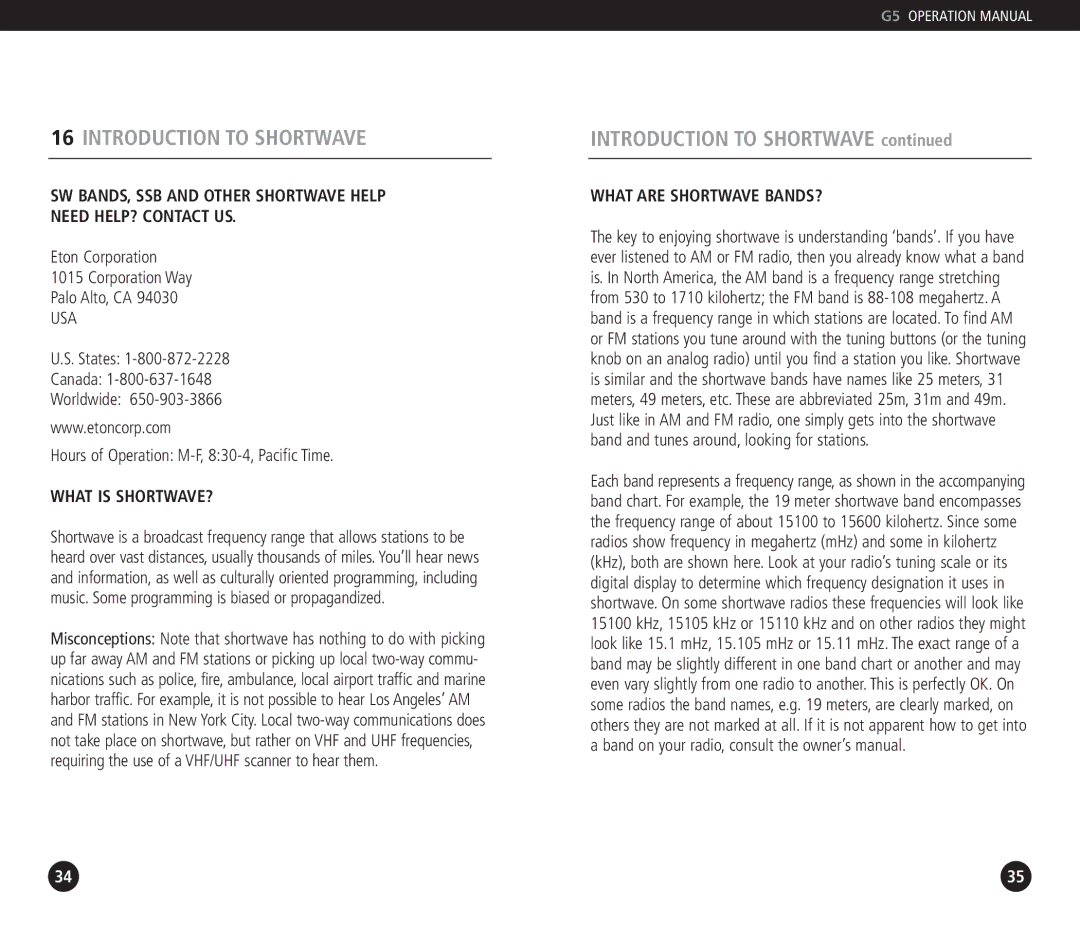
G5 OPERATION MANUAL
16INTRODUCTION TO SHORTWAVE
SW BANDS, SSB AND OTHER SHORTWAVE HELP NEED HELP? CONTACT US.
Eton Corporation
1015 Corporation Way
Palo Alto, CA 94030
USA
U.S. States:
Canada:
Worldwide:
www.etoncorp.com
Hours of Operation:
WHAT IS SHORTWAVE?
Shortwave is a broadcast frequency range that allows stations to be heard over vast distances,usually thousands of miles.You’ll hear news and information,as well as culturally oriented programming,including music. Some programming is biased or propagandized.
Misconceptions: Note that shortwave has nothing to do with picking up far away AM and FM stations or picking up local
INTRODUCTION TO SHORTWAVE continued
WHAT ARE SHORTWAVE BANDS?
The key to enjoying shortwave is understanding ‘bands’. If you have ever listened to AM or FM radio, then you already know what a band is. In North America, the AM band is a frequency range stretching from 530 to 1710 kilohertz; the FM band is
Each band representsa frequency range,as shown in the accompanying band chart. For example, the 19 meter shortwave band encompasses the frequency range of about 15100 to 15600 kilohertz. Since some radios show frequency in megahertz (mHz) and some in kilohertz (kHz), both are shown here. Look at your radio’s tuning scale or its digital display to determine which frequency designation it uses in shortwave. On some shortwave radios these frequencies will look like 15100 kHz, 15105 kHz or 15110 kHz and on other radios they might look like 15.1 mHz, 15.105 mHz or 15.11 mHz. The exact range of a band may be slightly different in one band chart or another and may even vary slightly from one radio to another.This is perfectly OK. On some radios the band names, e.g. 19 meters, are clearly marked, on others they are not marked at all. If it is not apparent how to get into a band on your radio, consult the owner’s manual.
34 | 35 |
